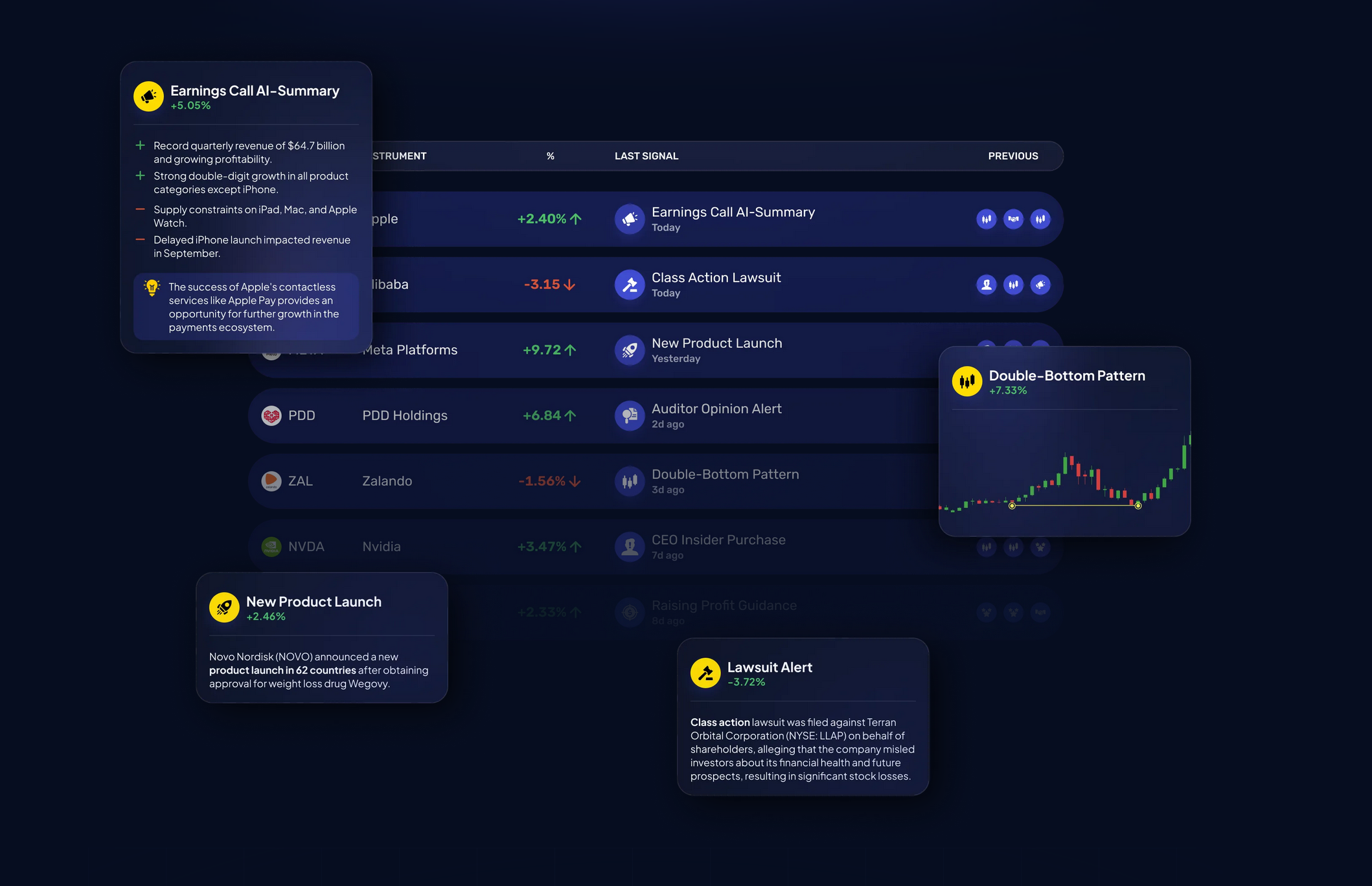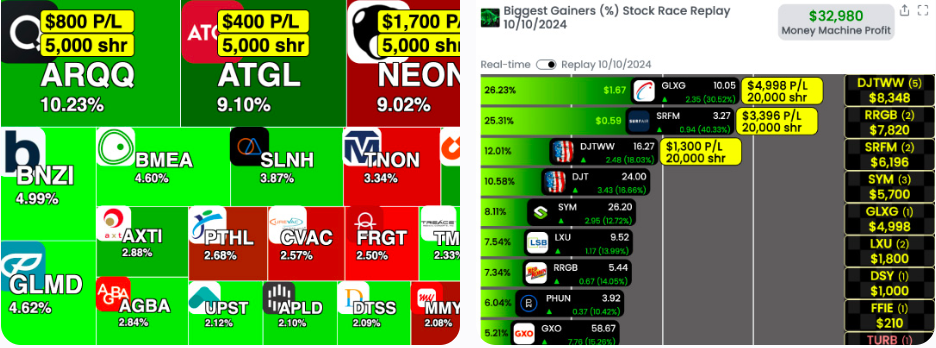20 Top Reasons On Deciding On AI Stock Predictions Analysis Sites
20 Top Reasons On Deciding On AI Stock Predictions Analysis Sites
Blog Article
Top 10 Tips To Evaluate The Quality Of Data As Well As Sources Of Ai Trading Platforms That Predict/Analyze Price Of Stocks.
It is crucial to assess the data quality and sources used by AI-driven trading platforms as well as platforms for stock predictions for precise and reliable information. Insufficient quality data can result in inaccurate forecasts, financial losses and a lack of trust in the platform. These are the top 10 tips for evaluating data quality and sources:
1. Verify the Data Sources
Find out where the data came from: Make sure you choose reputable and well-known data providers.
Transparency. The platform should publicly disclose the sources of data it relies on and keep them up to date.
Avoid single-source dependence: Reliable platforms combine data from multiple sources in order to eliminate biases and mistakes.
2. Check the Freshness of Data
Real-time vs. delayed data: Determine whether the platform offers real-time information or delayed information. Real-time data is essential to ensure that trading is active, whereas delayed data can be sufficient for long-term analysis.
Update frequency: Find out how often the information is updated (e.g. minute-by-minute daily, hourly).
Consistency of historical data: Ensure whether the historical data is free of gaps and anomalies.
3. Evaluate Data Completeness
Find missing data.
Coverage. Check that your platform is able to offer a range of markets, stocks, and indices relevant to your strategy of trading.
Corporate actions: Make sure that the platform contains stock splits (dividends), mergers, and other corporate actions.
4. Accuracy of test data
Consistency of data can be assured by comparing the data of the platform with other trustworthy sources.
Error detection - Search for outliers and erroneous pricing or financial metrics that aren't match.
Backtesting. Utilize the historical data to test your trading strategy and see if it matches expectations.
5. Examine the data's Granularity
Detail: Make sure the platform has granular information, such as intraday prices, volume bid-ask spreads, as well as order book depth.
Financial metrics: Make sure that the platform provides complete financial statements (income statement and balance sheet, as well as cash flow) and key ratios (P/E, P/B, ROE, etc. ).
6. Verify that the Data Cleaning is in place and Processing
Data normalization. Make sure that the platform is normalizing data to maintain consistency (e.g. by adjusting splits, dividends).
Outlier handling: Find out how the platform handles anomalies or outliers within the data.
Incorrect Data: Determine whether the platform uses effective methods to fill in data points that aren't there.
7. Examine the Consistency of Data
Timezone alignment align data in accordance with the same timezone to avoid differences.
Format consistency: Check that data is formatted in the same format.
Cross-market uniformity: Make sure that data from multiple exchanges or markets are in harmony.
8. Assess Data Relevance
Relevance to your trading strategy Check that the information corresponds to your style of trading (e.g. quantitative modeling, quantitative analysis, technical analysis).
Features Selection: Find out if the platform provides useful features, such as economic indicators, sentiment analysis and news information which will improve the accuracy of predictions.
Examine the integrity and security of your information
Data encryption: Check that the platform utilizes encryption to secure data as it is transmitted and stored.
Tamper-proofing : Make sure that the data has not been manipulated by the platform.
Security: Make sure whether the platform is compliant with regulations on data protection (e.g. GDPR, CCPA).
10. Check out the Platform's AI Model Transparency
Explainability. Be sure to comprehend how the AI uses data to create predictions.
Bias detection: Find out if the platform actively monitors and mitigates biases in the model or data.
Performance metrics: Assess the track record of the platform and performance metrics (e.g., accuracy precision, recall, etc.)) to determine the accuracy of its predictions.
Bonus Tips
Reputation and reviews from users User reviews and feedback to assess the reliability of the platform and its data quality.
Trial period: Try the platform for free to check out how it functions and what features are available before you commit.
Customer support: Ensure the platform has a solid customer support for issues with data.
These tips will allow you to assess the quality, sources, and accuracy of AI-based stock prediction tools. Take a look at the top rated ai trade for site recommendations including chatgpt copyright, market ai, ai for investment, ai investment app, ai stock trading, ai stock trading bot free, chatgpt copyright, ai stocks, investing ai, chatgpt copyright and more.
Top 10 Tips To Assess The Scalability Ai Platform For Predicting/Analyzing Trade Platforms
Scalability is a crucial element in determining whether AI-driven platforms that predict stock prices and trading are able to handle increasing user demand, volume of data and market complexity. These are the top 10 tips to evaluate scalability:
1. Evaluate Data Handling Capacity
Check to see if your platform can analyze and process large data sets.
The reason: A scalable platform should be able to handle the growing volumes of data with no degradation in performance.
2. Test the capabilities of Real-Time Processing
Tips: Check how the platform processes real-time data streams such as live stock prices or breaking news.
Why trading decisions are taken in real-time, and delays could lead traders to miss opportunities.
3. Cloud Infrastructure and Elasticity Cloud Infrastructure and Elasticity: Take a look
Tip: Check if your cloud platform (e.g. AWS, Google Cloud or Azure) and able to dynamically scale resources.
Why? Cloud platforms are flexible, and are able to be scaled up and down in response to the demands.
4. Assess Algorithm Efficiency
TIP: Check the computational efficiency (e.g. deep-learning, reinforcement learning) of the AI models used for prediction.
The reason: Complex algorithms are resource-intensive. Optimising them is the most effective way to scale.
5. Examine Parallel and Distributed Computing
Tip: Determine if a platform uses distributed computing and parallel processing frameworks.
Why: These technologies enable quicker data processing and analysis across a variety of nodes.
Review API Integration & Interoperability
Tips: Make sure that the platform can integrate with other APIs, such as brokers and market data providers. APIs.
Why? Because the platform is able to adapt to changes in market conditions and data sources because of seamless integration.
7. Analyze User Load Handling
Make use of a high-traffic simulation in order to check how the platform responds when under stress.
Why is that a platform that can scale has to maintain its performance as the number of users increases.
8. Examine the Model Retraining and Adaptability
TIP: Check how often AI models can be taught with new data.
Since markets always change It is crucial to keep models up-to-date.
9. Verify Fault Tolerance and Redundancy
Tip: Ensure the platform has failover mechanism and redundancy for hardware or software failures.
Reason: Trading can be expensive, so scaling and fault tolerance are crucial.
10. Monitor Cost Efficiency
Tip: Analyze the cost of scaling the platform, which includes cloud resources, storage for data, and computational power.
Why is it important to maintain a healthy balance between expenditures and costs for performance.
Bonus Tip: Future Proofing
Be sure that the platform is able to adjust to changes in regulations and incorporates new technologies, like quantum computing or advanced NLP.
By focusing on these factors you will be able to assess the scale of AI stock prediction and trading platforms. This will ensure that they are reliable, efficient and ready for the future growth. Have a look at the most popular inciteai.com AI stock app for website advice including can ai predict stock market, stocks ai, ai copyright signals, ai stock prediction, ai share trading, how to use ai for copyright trading, ai in stock market, best ai stocks to buy now, how to use ai for stock trading, stock predictor and more.